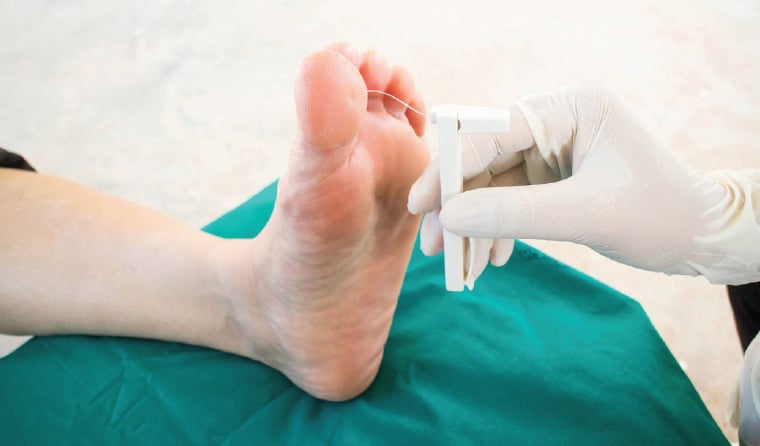For people living with diabetes, even a small cut or blister can become a serious health concern if not properly managed. That’s why diabetic wound care is a must in preventing infections, promoting healing, and protecting overall health. With the right practices and guidance from medical professionals, you can minimize complications and promote recovery. Here are four practices for effective diabetic wound care to help keep your feet and your health on track:
Keep Wounds Clean
Cleaning diabetic wounds properly forms the foundation of effective diabetes wound care. Start by washing your hands thoroughly before touching any wound. Use clean, lukewarm water and a mild soap to clean the affected area gently. Avoid harsh chemicals like hydrogen peroxide or alcohol, as these substances can damage healthy tissue and slow down the healing process.
After cleaning, pat the wound dry with a clean towel. Apply a thin layer of antibiotic ointment if your doctor recommends it. Cover the wound with a sterile bandage or dressing that keeps moisture in while protecting against bacteria. Change the dressing daily, or as soon as it becomes wet or dirty. Choose appropriate footwear to protect foot wounds from further injury.
Monitor for Signs of Infection
Daily wound inspection plays a fundamental role in diabetic wound care. Check your wound each day for changes in size, color, or drainage. Look for signs that indicate infection, such as increased redness, warmth, or swelling around the wound edges.
Watch for unusual drainage from the wound. Healthy drainage appears clear or slightly yellow, while infected wounds often produce thick, cloudy, or foul-smelling discharge. Also monitor for increased pain, fever, or red streaks extending from the wound site.
Take photos of your wound to track healing progress over time. This documentation helps your healthcare provider assess whether treatment is working effectively. Contact your doctor immediately if you notice any concerning changes or if the wound appears to be getting worse rather than better.
Promote Healing
Blood sugar management directly impacts wound healing speed and success. High glucose levels impair your body’s ability to fight infection and repair damaged tissue. Check your blood sugar levels regularly and follow your diabetes management plan carefully. Maintain blood glucose levels within your target range through medication, diet, and exercise as prescribed by your healthcare provider.
Consistent blood sugar control enhances circulation and supports your immune system’s proper function during the healing process. Proper nutrition also supports wound healing by providing the building blocks your body needs to repair tissue. Eat a diet rich in protein and include foods that are high in vitamin C, zinc, and other key nutrients that support healing. Stay hydrated by drinking adequate water throughout the day.
Work Closely With a Specialist
Professional medical care is fundamental for successful diabetic wound management. Schedule regular appointments with a wound care specialist who understands the unique challenges of diabetic wounds. These experts provide advanced treatments that may not be available through general medical care.
Your specialist may recommend treatments such as specialized dressings, growth factors, or procedures to improve blood flow to the wound area. They also assess whether the wound shows signs of healing or if intensive interventions are needed. Follow your specialist’s instructions carefully regarding wound care techniques, medication schedules, and activity restrictions. Attend all scheduled appointments, even if the wound appears to be healing well.
Schedule Your Diabetic Wound Care Appointment Today
Effective diabetic wound care requires commitment to daily monitoring, proper cleaning techniques, blood sugar control, and professional medical support. These four practices work together to promote healing and prevent serious complications that could threaten your health or mobility. Contact a trusted wound care specialist near you to schedule your consultation today.







